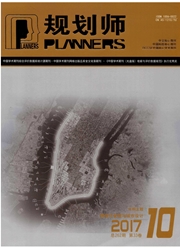

 中文摘要:
中文摘要:
大气霾污染因其对人体健康、生态环境和气候变化的影响而成为全球关注的严重环境问题,PM2.5是中国霾污染频繁的主要原因。过去对国家尺度上PM2.5时空分布的认识主要基于卫星观测,因其反演方法的局限性,卫星资料难以真实反映近地面PM2.5浓度的时空变化规律。本文基于中国2014年190个城市中的945个监测站的PM2.5浓度观测数据,采用空间数据统计模型,揭示了中国PM2.5的时空格局。结果显示,2014年中国城市PM2.5平均浓度61gg/m^3,具有显著的冬秋高、春夏低的“U”型逐月变化规律和周期性U-脉冲型逐日变化规律;中国城市PM2.5浓度呈现显著的空间分异与集聚规律,以及两次南北进退的空间循环周期;胡焕庸线和长江是中国PM2.5浓度高值区和低值区的东西和南北分界线,胡焕庸线以东和长江以北的环渤海城市群、中原城市群、长三角城市群、长江中游城市群和哈长城市群等地区是2014年PM2.5的高污染城市聚集地,京津冀城市群是全年污染核心区;以珠三角为核心的东南沿海地区是稳定的空气质量优良区。
 英文摘要:
英文摘要:
Haze pollution in China has become a severe environmental problem for people' s daily life as well as their health, among which PM2.5 makes significant contribution to poor air quality. Satellite observations played a leading role in the recognition in the spatio-temporal variation of PM2.5 nationally. However, based on the information and data obtained by satellites, the inversion method has limitations to truly reflect the spatio-temporal variation of PM2.5 concentrations near ground level. Based on the observed PM2.5concentration data from 945 newly set-up air monitoring sites in 2014, our research reveals the spatio-temporal variations of PM2.5 concentrations in China by using spatial statistical model. The results show that (1) in 2014, the average PM2.5 concentration in China was 61 μg/m^3. It had a periodical U-impulse type daily variation as well as a U-shaped monthly variation with a higher level in autumn and winter while a lower one in spring and summer. (2) Concentration of PM2.5 in urban China shows a significant spatial differentiation and clustering pattern with spatial-periodic occurrences in north and south China. (3) The Hu-line (Hu Population Line) and Yangtze River are respectively the east-west and north-south boundaries which separate the high-value zone and the low-value zone of PM2.5 concentrations in China. In 2014, the highly polluted cities by PM:s were mainly distributed in the urban agglomerations (Central Henan, Harbin-Changchun, the Bohai Rim Region, the Yangtze River Delta, and the Middle Yangtze River), east of the Hu- line and north of the Yangtze River. The Beijing-Tianjin-Hebei urban agglomeration was the most severely polluted region all the year round. The southeast coastal region centered on the Pearl River Delta had good air quality in a stable manner.
 同期刊论文项目
同期刊论文项目
 同项目期刊论文
同项目期刊论文
 期刊信息
期刊信息
